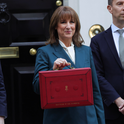The government’s furlough scheme has been a saviour for many employees and firms, supporting nearly 12 million jobs since its introduction in March 2020, at the time of the first lockdown. However, its task of sandbagging against a potential tidal wave of redundancies is done. Lockdown is lifted, and vaccine rollout and reduced Covid-19 fatality rates mean that it is correct for lockdown’s twin, furlough, to end too. Now, with acute labour shortages emerging, the UK needs measures to stimulate reallocation of work—not measures to keep workers idle.
Furlough schemes have many objectives. One is to support workers’ income through a temporary period when demand turns down. A second is to support firms until demand returns. A third motive is to keep workers in their jobs so they can retain their firm-specific skills. The scheme undoubtedly helped in each of these and limited the permanent loss of capacity resulting from Covid.
Arguments for extending furlough often overlook the compelling political economy and health motives for the scheme. Furlough made lockdown politically acceptable when it would otherwise have provoked a storm of company closures and redundancies, and therefore massive opposition. Furlough made lockdowns possible, and lockdowns made furlough a necessity. Lockdowns are over, and furlough should disappear too.
There are good social arguments for continuing furlough, which now covers 1.6m jobs in July (down from a peak of nearly nine million in May 2020). July’s take-up rate was about 5 per cent of eligible jobs—7 per cent for men, and 5 per cent for women. The impact of ending furlough will differ sharply across regions, firms, and sectors. The highest take-up rate is in London, 8 per cent, and the lowest, 4 per cent, in the South West. Small firms benefit disproportionately from the scheme, with a take-up rate of 20 per cent for firms with two-four employees, but only 2 per cent for those with over 250 employees. Furlough concentrates in face-to-face services, such as accommodation and food services, and arts, entertainment and recreation, where the take-up rate is 15 per cent. Undeniably, when furlough ends, a significant number of workers will face unemployment. The National Institute of Economic and Social Research (NIESR) expects unemployment to rise by 150,000 on average between the third and fourth quarters. New jobs may be unavailable locally, and some workers may lack the required skills: they may face sharply reduced income. But while there are broad arguments for improving the UK’s income support for job losers, extending a temporary scheme focussing on job losses stemming from one cause is not a considered way to change the system.
Job prospects improved considerably this year, with employment back to pre-Covid levels. Forecasters have extensively revised down their unemployment projections, and it is significantly easier to find a job than it was in the worst of the pandemic. NIESR now forecasts unemployment at the end of this year at 5.4 per cent, compared with the forecast of 6.5 per cent made in May and 7.5 per cent in February. Vacancies are at a record high, and there are frequent reports of worker shortages, including in sectors with high furlough rates. Thus, the unemployment consequences of ending the furlough at the end of September look far less severe than just a few months ago.
The current furlough scheme is sand in the machinery of resource reallocation. In the first seven months of 2021, company insolvencies in England and Wales were nearly 40 per cent lower than in the same months of 2019, whereas Covid and lower activity should have pushed them up. It seems clear that thousands of companies, lacking long-term viability, are using the subsidy of furlough to hang on in the hope of an unlikely resurrection—while preventing resources moving to more productive uses. Furlough payments discourage active labour force participation and the search for new jobs, while keeping some employees on the books of unviable employers. In July, total UK output was 7.5 per cent higher than a year earlier and 30 per cent up on April 2020’s trough, stimulating employment demand. Against this background, furlough exacerbates the increasing labour shortages we are seeing, and so stymies recruitment by start-ups and expanding businesses with bright growth prospects.
Calls to extend the furlough scheme into next year rely on hopes that Covid will recede and the hardest-hit sectors can return to normal. Given a series of new variants, the chances are that Covid-19 will become endemic: we must adapt to the new normal rather than cling to the old. It is therefore correct to call time on the job retention scheme. Covid shifted the pattern of demand and will continue to do so. Policy needs to speed up the economy’s adaptation to that, not slow it down.












